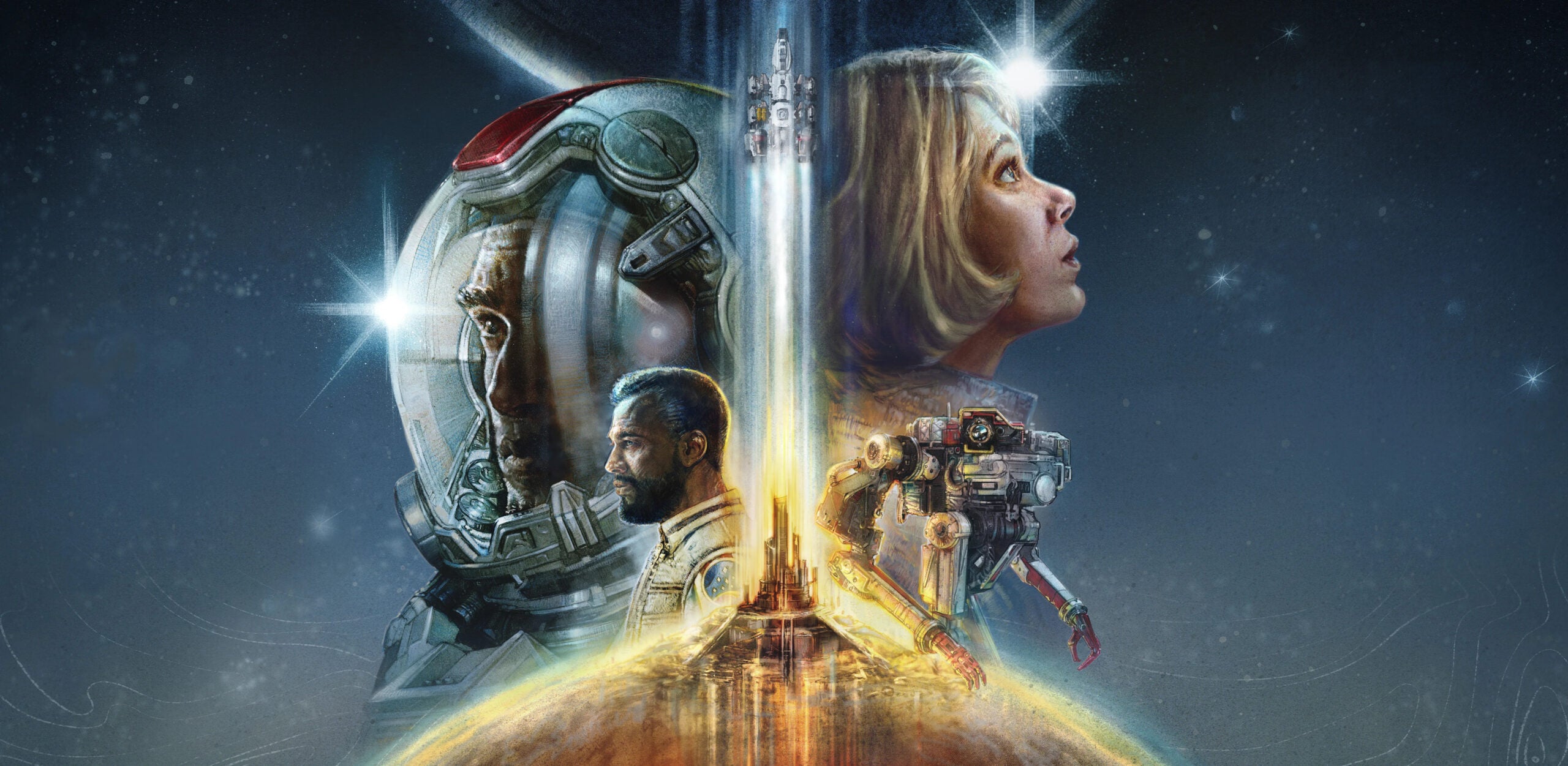Verdict
Starfield is an excellent RPG in the same mould as Skyrim and Fallout, but with a sci-fi spin. It features a deep skill tree and rewarding side quests to eat up your free time, as well as fantastic gunplay. But it hasn’t quite reached the high expectations for space exploration, with technical limitations and countless bland planets making the journey into the stars a rather mundane one.
Pros
- Fantastic side quests to dig into
- Superb gunplay and variety of weapons
- Ship customisation is excellent
- Expansive skill tree for true RPG experience
Cons
- Mostly boring story campaign
- Space and planet exploration is a chore
- Overencumbered system is incredibly frustrating
-
Platforms:Xbox Series S/X and PC -
Release date:6 September 2023 -
Genre:Action RPG
Introduction
Bethesda has become a household name in the gaming community thanks to the immersive world building and deep RPG mechanics of popular game series such as The Elder Scrolls and Fallout.
For its latest game, Bethesda has rocketed up to space for its most ambitious project yet. Starfield takes the same RPG blueprint that Bethesda is renowned for, but adds a sci-fi spin. It’s a more grounded approach than the likes of Mass Effect or Halo, with humanity in the early phase of its ascension to the stars.
Starfield also adds a number of twists to the formula, allowing you to visit over 1000 different planets across 100 star systems. However, in order to accomplish this technical feat, Bethesda has been forced to make a number of compromises which arguably diminishes the appeal of space exploration.
Therefore, Starfield isn’t quite the groundbreaking next-generation triumph it was hyped up to be, but will nonetheless become another fan favourite for those who enjoyed previous classic Bethesda RPGs.
Story
- Takes less than 24 hours to complete story campaign
- Story missions quickly become repetitive
- Oodles of great side quests available
Starfield is set around the year 2310. There’s no longer life on planet Earth, with the once green and blue planet reduced to a desert wasteland. Instead, humanity has ascended to the stars, journeying into numerous star systems to form the Settled Systems.
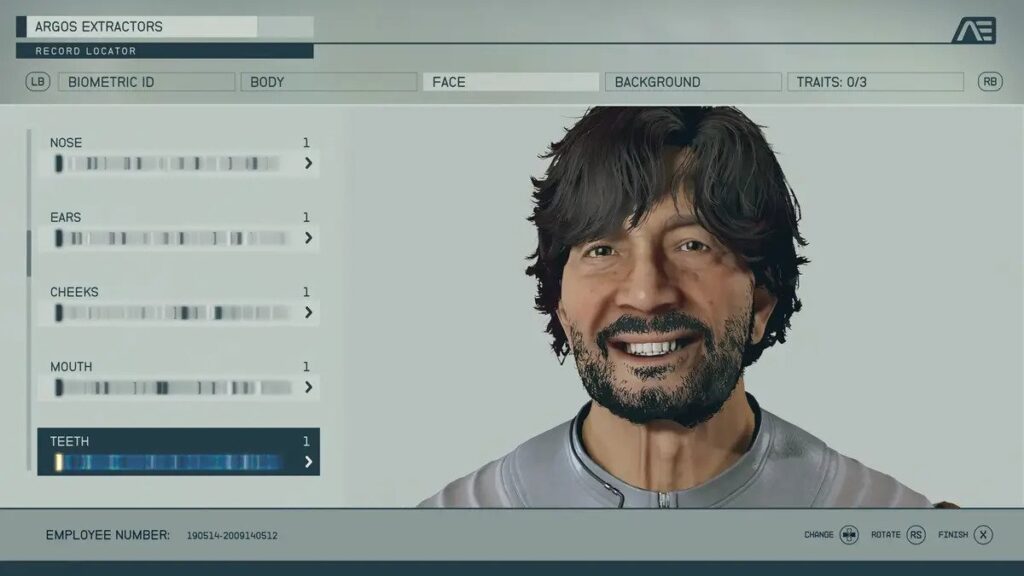
A generous character creator tool not only allows you to mould the appearance of your character to your liking, but also sets their background, providing stat-boosting perks to start you off. No matter what identity you give the protagonist, the story kicks off the same, as you join a group called the Constellation, with an obsession with exploring uncharted space.
You soon discover a mysterious object called the Artifact, providing strange visions to whoever first discovers them. Assumed to be of alien origin, it becomes your objective to track down every single artifcat scattered across the universe.
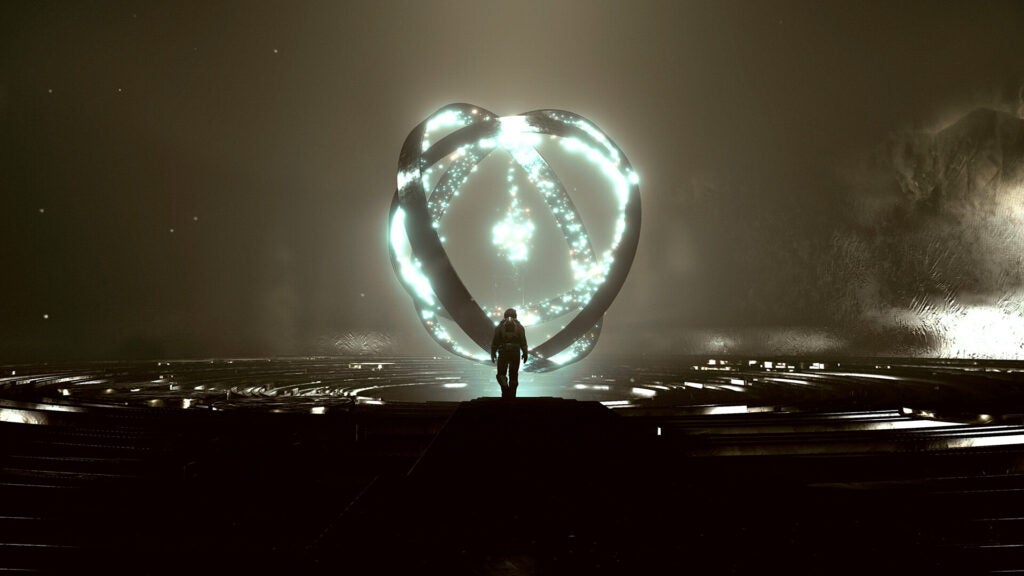
This quickly becomes an arduous task, with each planet usually inhabiting little else but basic lifeforms. There’s generally very little to do on these planets other than complete the job at hand, which has a frustratingly repetitive formula: simply follow your tracker to a temple, collect the Artifact and then fight off one or two enemies.
What’s worse, you won’t encounter the real villain until roughly halfway through the main campaign, which took me less than 24 hours to complete. It has a plodding pace, with little stakes to up the tempo. There are the odd few missions that are genuinely entertaining, with high points including a space station trapped in a multi-dimensional rift and becoming the mediator in a Western-style bank robbery.
Sadly, these high points are the exception to the rule for the main story campaign, with it mostly consisting of fetch quests and the exploration of barren, lifeless planets. The ending is also extremely underwhelming, feeling little more than a way for you to access the New Game+ mode.
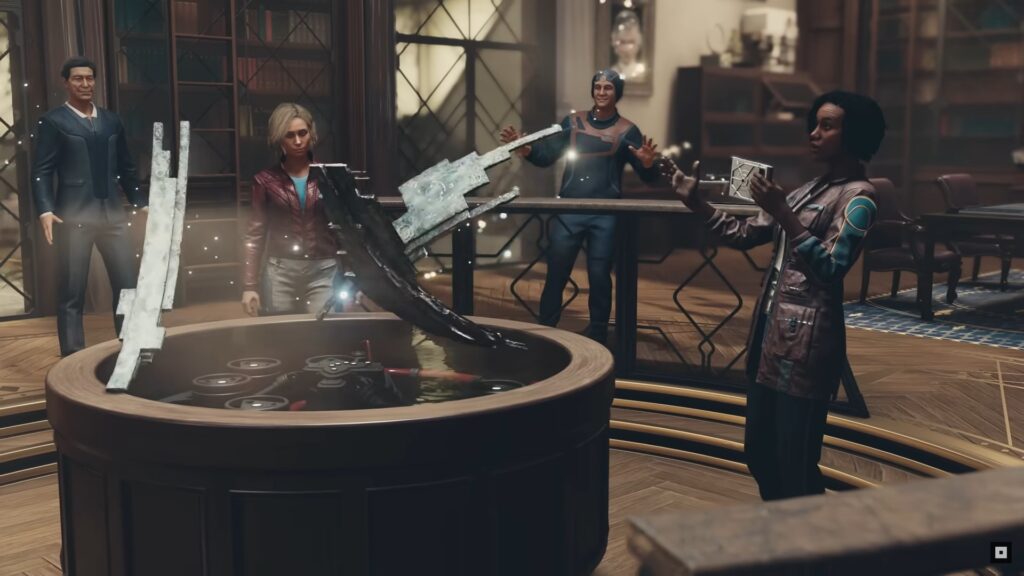
Starfield shines the brightest with its sidequests, and I’d advise you to prioritise these over completing the main story. My personal favourite involved being blackmailed by the police to become an undercover space pirate. Doing so impacts the wider universe too, as space pirates stopped attacking me while I was a member of their clan.
There are countless other entertaining side quests here too, each offering a short story that was far more interesting than the main plot. I’ve helped smuggle illegal goods, sabotaged a brewery company and answered the call of numerous distress signals. There’s often a good reward for your troubles too, be it a bounty of credits or even a new weapon.
Exploration
- Most planets are a bore to explore
- Space travel is limited mostly to fast travel
- Spaceship customisation and combat is great
One of Starfield’s standout features is the ability to travel through space in your own custom ship, and visit over 1000 planets. It sounds too good to be true… and sadly, that arguably is the case.
Bethesda certainly hasn’t lied or exaggerated – you absolutely can visit that many planets, but most of them (reportedly 90%) are lifeless, with little to do but mine resources. These planets differ in numerous ways, such as the strength of gravity, biomes and temperature. But after visiting one or two of these planets, they become increasingly more boring to explore.
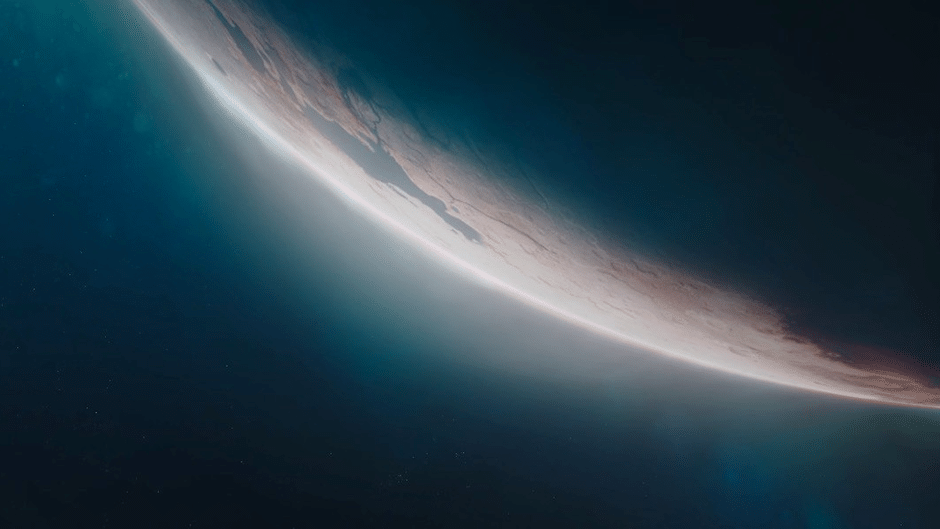
Bethesda has used a technique called procedural generation in order to create these planets. It’s an impressive technical feat, but the lack of environmental storytelling and engaging side quests see these planets void of any memorable points of interest.
Bethesda has smartly incorporated hand-crafted events that can randomly occur on these lifeless planets to make them a little more interesting. Sometimes you’ll encounter a station full of pirates or marooned explorers pleading for a ride to the nearest colonised planet, but these instances are frequently recycled, so the novelty wears off quickly.
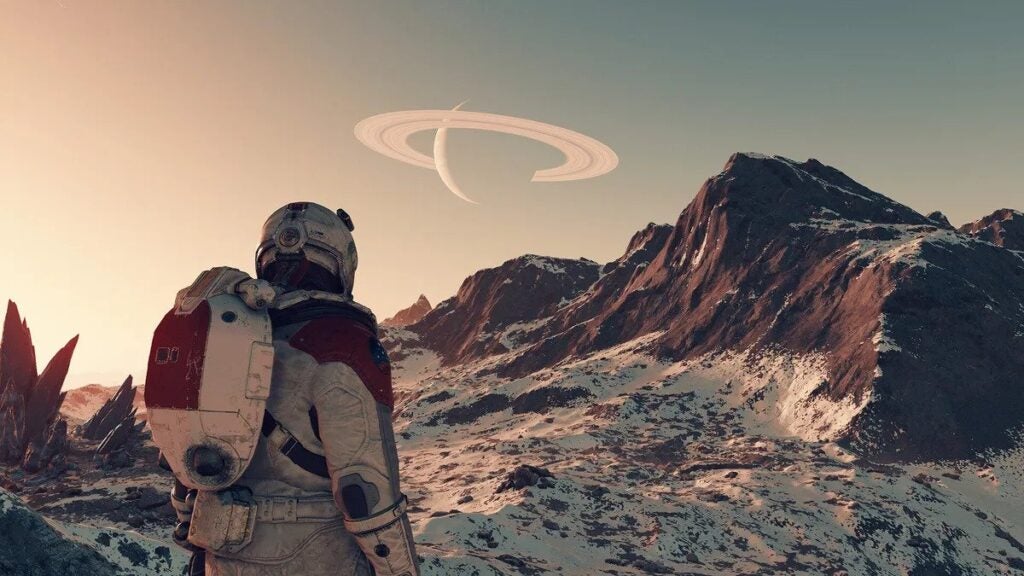
You’re also able to explore many other planets that do inhabit life, but these quickly become a chore to explore too. You’ll generally find around four or five species of animals to discover on these planets, but I rarely encountered anything larger than my own character. Killing these creatures can be useful for amassing resources, but that’s the only fruitful interaction. Scanning all of the available animals and plants on a planet can provide you with a financial reward, but I personally felt this was such a chore that I rarely bothered.
I was also put off exploring random planets due to the heavy restrictions on space travel. When I first jetted up into space for the first time, I was bemused to find that you’re not able to fly from planet to planet. If you want to fly from Mars to Jupiter, for example, you’ll need to open up your space map and trigger fast travel.
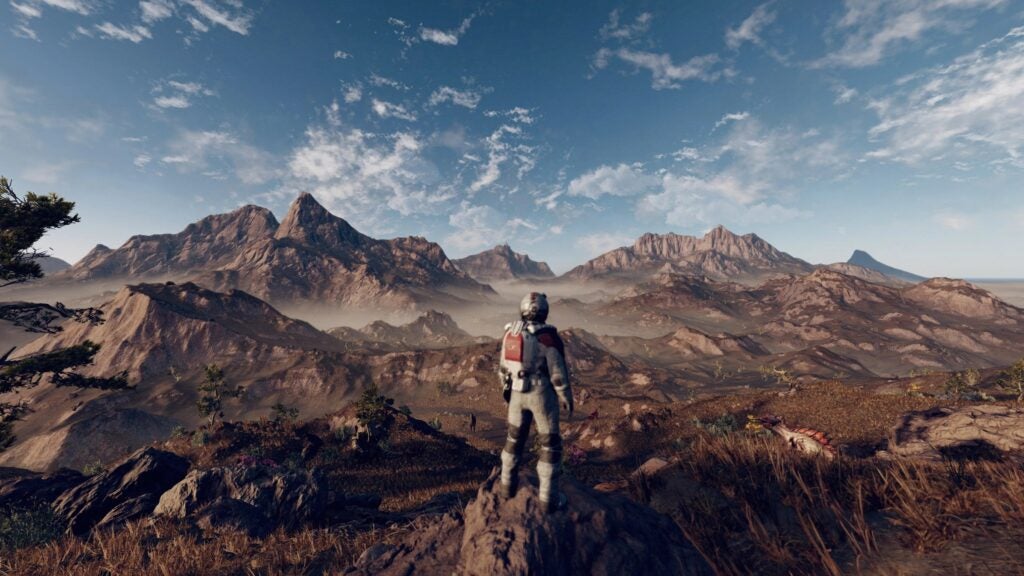
This means when manually flying through space, you’re restricted to a planet’s orbit. There are still plenty of things you can do in this space, including visiting space stations, trade with nearby explorers and hijack spaceships. But fly too far out of a planet’s orbit, and you’ll hit an invisible wall, which is frustratingly restrictive, especially when compared to games such as No Man’s Sky. You also can’t fly down into a planet’s atmosphere to land, instead having to click on the planet and select a landing point, which impacts the immersion.
That said, I adore the ship customisation in Starfield. You’re not only able to save up your credits to buy a new spaceship, but you can also build your very own from scratch. There’s a number of ways to upgrade your ship too, including increasing the max speed, selecting different weapons, improving shields and boosting the Grav Drive so you can travel even further across the galaxy.
I also loved how the interior of the ship will change as you increase the size. I started off with a tiny little ship with all of my crew crammed into a single room, to a massive one with multiple areas and interactive crafting stations.
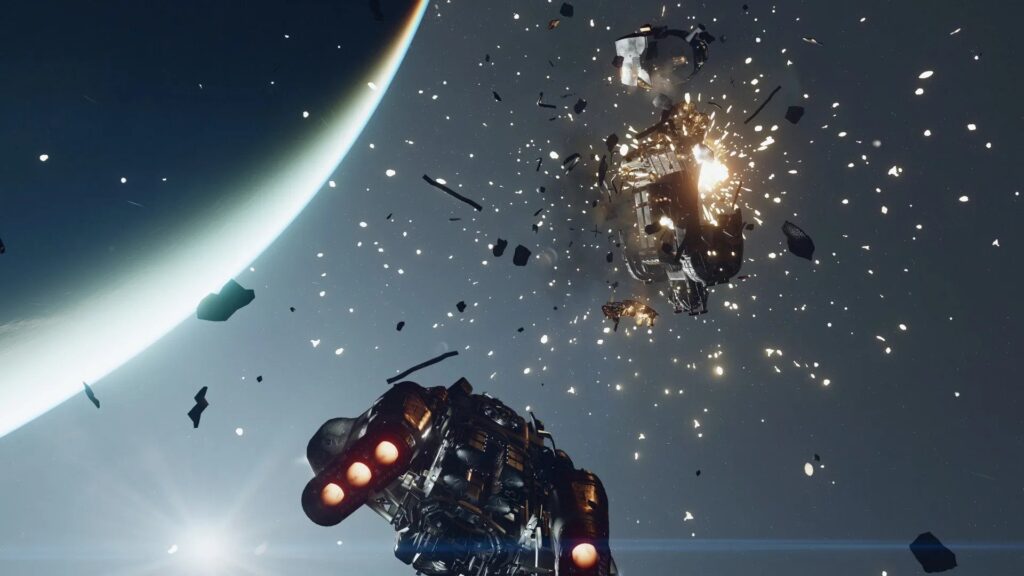
Spaceship combat is an exhilarating experience that feels straight out of a Stars Wars movie. You’re able to use up to three different weapon types to deplete enemy shields, and can even target specific parts of an enemy ship once you have the required skill.
However, there are large difficulty spikes for space combat throughout the campaign, so it’s important to remember to upgrade your ship, otherwise competing against several ships at once can become a frustratingly difficult challenge.
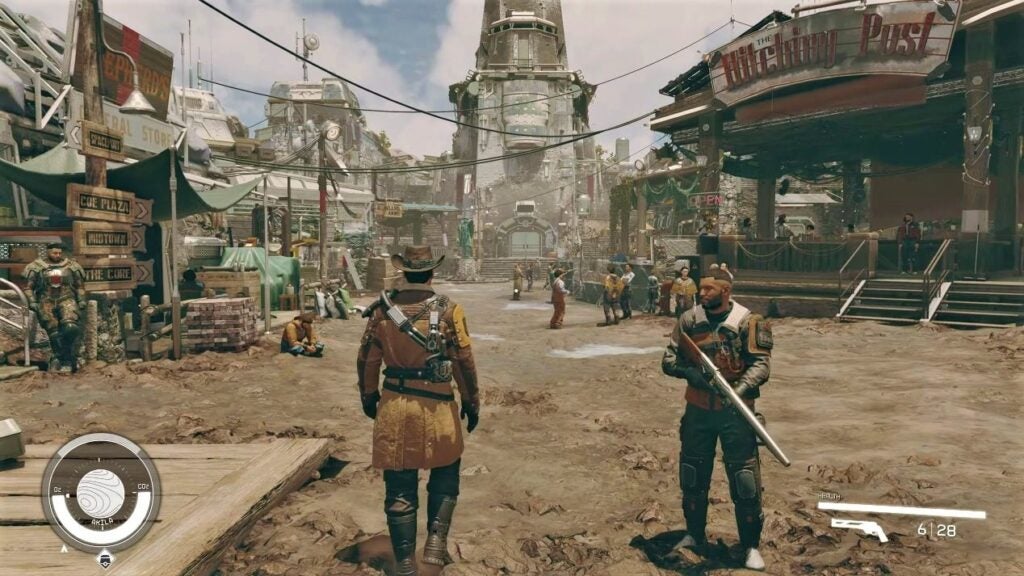
Starfield is at its best in heavily populated areas, with lots of human characters to offer side quests and engaging stories. Highlights include the crime-ridden Cyberpunk-esque city of Neon that’s plagued with a drug problem, and the cowboy town of Akila which looks as if a town from an old American western film has been randomly plonked onto an alien planet.
I just wish Starfield had more populated areas of this ilk to explore rather than focusing on cramming in as many lifeless planets as possible.
Combat
- Fantastic variety of weapons
- Multiple options to tackle each mission
- Expansive RPG systems
Starfield is both a first-person and third-person shooter, depending on your preferred perspective. My early impressions of the gunplay were mostly negative, with cramped spaceships making it difficult to avoid incoming fire, and the slow reloading of pistols proving irksome.
However, combat improved considerably as I invested in my skill tree and amassed a greater arsenal of weapons. The jet pack skill (Boost Pack Training) makes a huge difference, allowing me to soar up into the air in the middle of a fight, and land behind them for a shotgun blast to the back of the head.
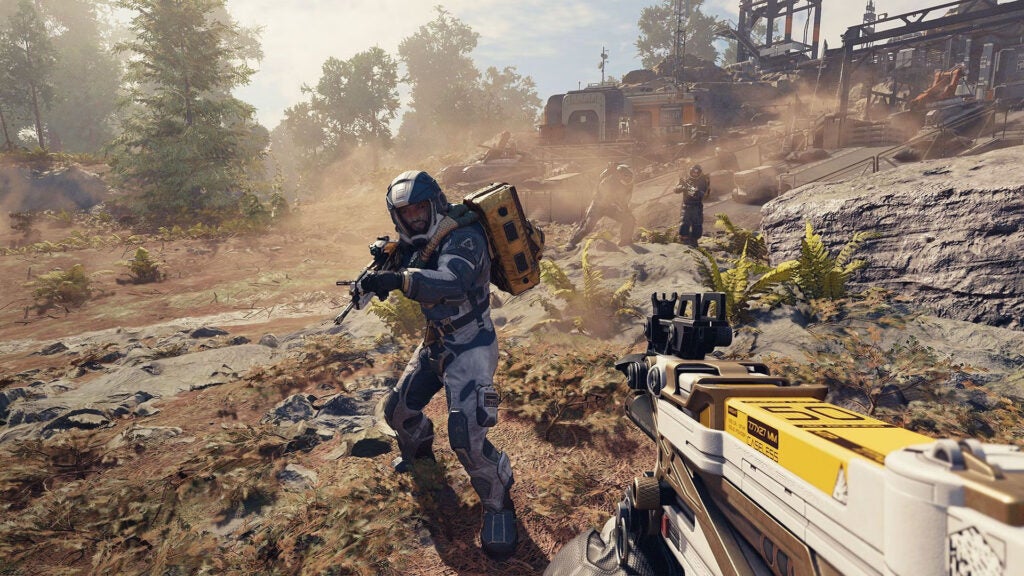
There’s an impressive variety of weapons here too. They’re not quite as grandiose as those from Halo or Borderlands, but I loved using the likes of the incendiary shotgun and laser rifle. During the late game, it was always a thrill discovering a new weapon with a unique ability. You’re even able to level up your skills for a massive variety of weapons, from pistols and shotguns to grenades and mines.
Bethesda’s notorious overencumbered feature makes a return, as carrying too many heavy items will cause you damage whenever your stamina meter is depleted. While I understand that Bethesda wants you to think carefully about the equipment and weapons you bring to each mission, I still found it to be an incredibly infuriating distraction even after maxing out my strength skill and making full use of my ship’s cargo space.
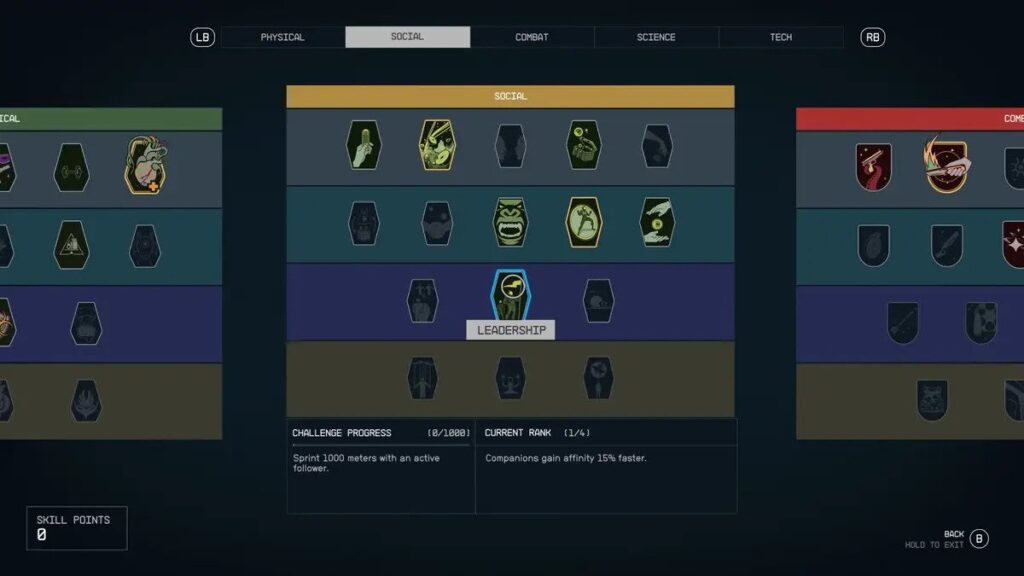
Like any other Bethesda RPG, you’re given numerous upgradable skills to allow you to pick non-lethal methods to overcome obstacles. One of my personal favourites includes the Security skill, which gives you the ability to unlock doors and vaults that may be hiding valuable loot. You can even hack into terminals to force enemy turrets and robots to fight for you. Unpicking a lock involves a mini puzzle for you to solve, which is both challenging and rewarding at the highest difficulty levels.
However, not every skill is made equal. I wasn’t too impressed with the stealth approach, as some enemies were far too static in their patrols, and there’s no option to silently incapacitate them when sneaking behind unless you have a really powerful melee weapon or a muzzled gun.
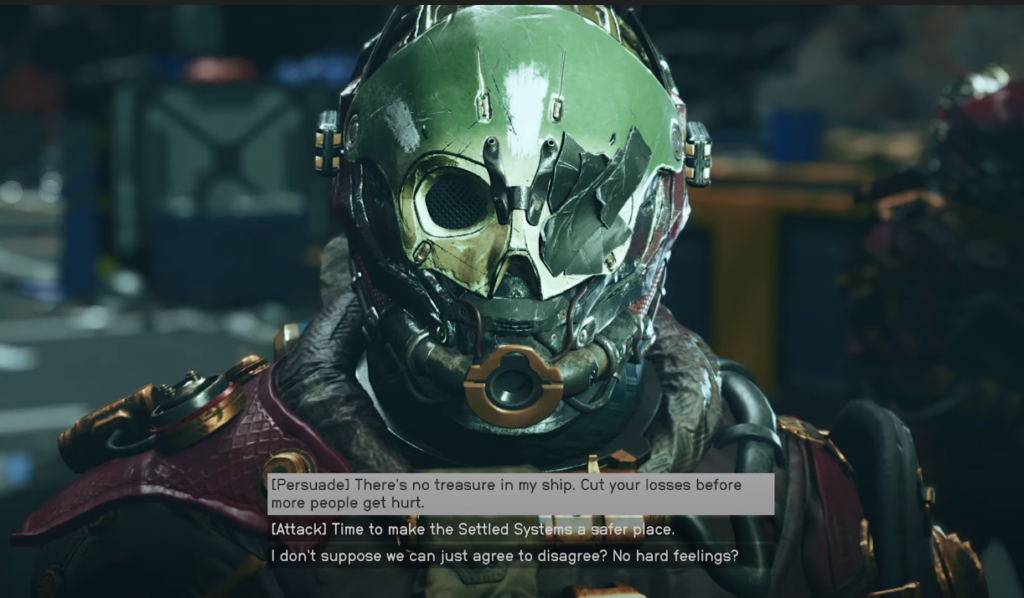
Bethesda has also attempted to improve the Persuasion ability, as levelling it up will increase your odds of defusing a tense situation without the need for combat. But since it’s purely random, and you don’t need to do any pre-sleuthing as you do in games such as The Outer Worlds, performing a successful persuasion feels akin to entering cheat codes. I was even able to bypass the final boss fight by getting a lucky dice roll in a persuasion attempt, which felt anticlimactic and unrewarding.
Nevertheless, I’m impressed with how many skills there are for you to upgrade in Starfield. I haven’t even scratched the surface of all the available abilities after completing the story campaign, with the New Game+ mode allowing you to retain progress and tackle missions with a new approach.
Performance and graphics
- Mostly free of bugs and glitches
- Crashed a few times during loading screens
- Smooth performance, even on Xbox Series S
Bethesda has proudly called Starfield its most polished game yet, and that looks to be the case from my experience. I only saw one notable glitch during my playthrough, where an NPC’s legs morphed through the ceiling. Otherwise, it’s remarkable to see how bug-free this game is when considering Starfield’s sheer scale.
Starfied is not without its technical faults. The game crashed on numerous occasions, generally during a fast travel loading screen, or when I opened up the settings menu shortly after loading into a game. This forced me to reset the Xbox Series S, but because of the frequent autosave feature, I rarely lost much progress – if any at all. Starfield even allows you to configure the frequency of autosaves, preventing the crashes from ever becoming a significant issue.
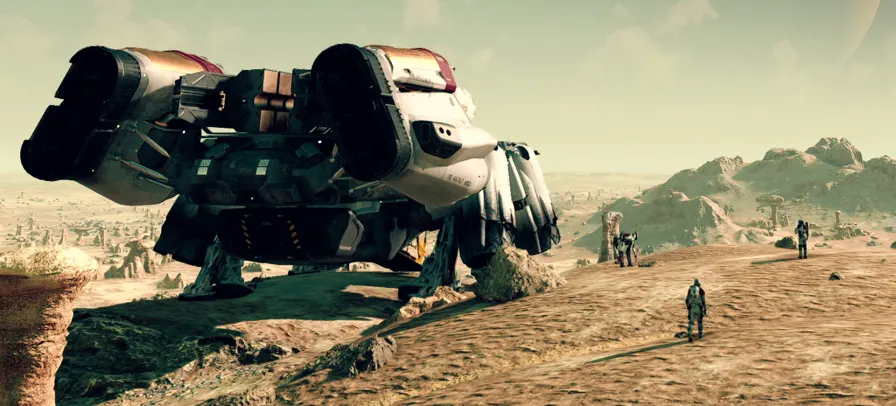
Starfield is a good looking game, especially when gazing down at a planet while up in orbit, or admiring the horizon of an alien planet. But while character models have improved considerably from the previous Bethesda entries, they’re still not on par with modern games such as Baldur’s Gate 3. That said, I reviewed Starfield on an Xbox Series S rather than a Series X or high-end PC, so that may be a major factor.
Bethesda has opted for a grounded NASA-like artstyle for Starfield’s sci-fi setting, and it does a great job of tying everything together, no matter where you are in the galaxy. I personally wasn’t a fan of the grainy filter that Bethesda has added over the display, although you can easily turn this off in the settings.
Latest deals
Should you buy it?
You want a new RPG in the mould of Fallout: Starfield is at its best when it makes use of the many RPG systems at play, and provides a bounty of side quests for you to complete however you please.
You want a groundbreaking space sandbox: Starfield falls short when it comes to space travel, with most planets being a lifeless bore and ship traversal limited. No Man’s Sky remains the best game for exploring the universe.
Final Thoughts
Starfield is one of Bethesda’s most ambitious projects to date, but it’s clear that technical limitations have held it back from delivering the expansive space exploration sandbox that it’s been hyped up to be. It’s certainly impressive that you can visit thousands of planets, but the lack of engaging content and over reliance on fast travel makes exploration a chore.
Starfield really starts to shine with the RPG elements that Bethesda is renowned for. There are hundreds of excellent side quests to discover, while there’s an expansive skill tree that allows you to approach each mission however you fancy.
If your main hope for Starfield was to explore a seemingly endless universe, then you’re better off sticking to No Man’s Sky. But if you simply want to play a new RPG in the mould of Fallout 4 and Skyrim, then Starfield should still be an enjoyable venture into the stars. Check out our Best Xbox Games list for more options.
How we test
We play every game we review through to the end, outside of certain exceptions where getting 100% completion, like Skyrim, is close to impossible to do. When we don’t fully finish a game before reviewing it, we will always alert the reader.
Completed the story campaign
FAQs
It took me less than 24 hours to complete the main story campaign. However, Bethesda has hinted that it can take more than 160 hours to complete everything that Starfield has to offer.
Starfield is absolutely massive, with over 1000 planets to explore. But most of these planets are sparse of content, using procedural generation to create them.
You can fly around a planet’s orbit in Starfield, but you can’t fly to another planet or manually land, instead relying heavily on the fast travel mechanic to explore.
Verdict
Starfield is an excellent RPG in the same mould as Skyrim and Fallout, but with a sci-fi spin. It features a deep skill tree and rewarding side quests to eat up your free time, as well as fantastic gunplay. But it hasn’t quite reached the high expectations for space exploration, with technical limitations and countless bland planets making the journey into the stars a rather mundane one.
Pros
- Fantastic side quests to dig into
- Superb gunplay and variety of weapons
- Ship customisation is excellent
- Expansive skill tree for true RPG experience
Cons
- Mostly boring story campaign
- Space and planet exploration is a chore
- Overencumbered system is incredibly frustrating
-
Platforms:Xbox Series S/X and PC -
Release date:6 September 2023 -
Genre:Action RPG
Introduction
Bethesda has become a household name in the gaming community thanks to the immersive world building and deep RPG mechanics of popular game series such as The Elder Scrolls and Fallout.
For its latest game, Bethesda has rocketed up to space for its most ambitious project yet. Starfield takes the same RPG blueprint that Bethesda is renowned for, but adds a sci-fi spin. It’s a more grounded approach than the likes of Mass Effect or Halo, with humanity in the early phase of its ascension to the stars.
Starfield also adds a number of twists to the formula, allowing you to visit over 1000 different planets across 100 star systems. However, in order to accomplish this technical feat, Bethesda has been forced to make a number of compromises which arguably diminishes the appeal of space exploration.
Therefore, Starfield isn’t quite the groundbreaking next-generation triumph it was hyped up to be, but will nonetheless become another fan favourite for those who enjoyed previous classic Bethesda RPGs.
Story
- Takes less than 24 hours to complete story campaign
- Story missions quickly become repetitive
- Oodles of great side quests available
Starfield is set around the year 2310. There’s no longer life on planet Earth, with the once green and blue planet reduced to a desert wasteland. Instead, humanity has ascended to the stars, journeying into numerous star systems to form the Settled Systems.

A generous character creator tool not only allows you to mould the appearance of your character to your liking, but also sets their background, providing stat-boosting perks to start you off. No matter what identity you give the protagonist, the story kicks off the same, as you join a group called the Constellation, with an obsession with exploring uncharted space.
You soon discover a mysterious object called the Artifact, providing strange visions to whoever first discovers them. Assumed to be of alien origin, it becomes your objective to track down every single artifcat scattered across the universe.

This quickly becomes an arduous task, with each planet usually inhabiting little else but basic lifeforms. There’s generally very little to do on these planets other than complete the job at hand, which has a frustratingly repetitive formula: simply follow your tracker to a temple, collect the Artifact and then fight off one or two enemies.
What’s worse, you won’t encounter the real villain until roughly halfway through the main campaign, which took me less than 24 hours to complete. It has a plodding pace, with little stakes to up the tempo. There are the odd few missions that are genuinely entertaining, with high points including a space station trapped in a multi-dimensional rift and becoming the mediator in a Western-style bank robbery.
Sadly, these high points are the exception to the rule for the main story campaign, with it mostly consisting of fetch quests and the exploration of barren, lifeless planets. The ending is also extremely underwhelming, feeling little more than a way for you to access the New Game+ mode.

Starfield shines the brightest with its sidequests, and I’d advise you to prioritise these over completing the main story. My personal favourite involved being blackmailed by the police to become an undercover space pirate. Doing so impacts the wider universe too, as space pirates stopped attacking me while I was a member of their clan.
There are countless other entertaining side quests here too, each offering a short story that was far more interesting than the main plot. I’ve helped smuggle illegal goods, sabotaged a brewery company and answered the call of numerous distress signals. There’s often a good reward for your troubles too, be it a bounty of credits or even a new weapon.
Exploration
- Most planets are a bore to explore
- Space travel is limited mostly to fast travel
- Spaceship customisation and combat is great
One of Starfield’s standout features is the ability to travel through space in your own custom ship, and visit over 1000 planets. It sounds too good to be true… and sadly, that arguably is the case.
Bethesda certainly hasn’t lied or exaggerated – you absolutely can visit that many planets, but most of them (reportedly 90%) are lifeless, with little to do but mine resources. These planets differ in numerous ways, such as the strength of gravity, biomes and temperature. But after visiting one or two of these planets, they become increasingly more boring to explore.

Bethesda has used a technique called procedural generation in order to create these planets. It’s an impressive technical feat, but the lack of environmental storytelling and engaging side quests see these planets void of any memorable points of interest.
Bethesda has smartly incorporated hand-crafted events that can randomly occur on these lifeless planets to make them a little more interesting. Sometimes you’ll encounter a station full of pirates or marooned explorers pleading for a ride to the nearest colonised planet, but these instances are frequently recycled, so the novelty wears off quickly.

You’re also able to explore many other planets that do inhabit life, but these quickly become a chore to explore too. You’ll generally find around four or five species of animals to discover on these planets, but I rarely encountered anything larger than my own character. Killing these creatures can be useful for amassing resources, but that’s the only fruitful interaction. Scanning all of the available animals and plants on a planet can provide you with a financial reward, but I personally felt this was such a chore that I rarely bothered.
I was also put off exploring random planets due to the heavy restrictions on space travel. When I first jetted up into space for the first time, I was bemused to find that you’re not able to fly from planet to planet. If you want to fly from Mars to Jupiter, for example, you’ll need to open up your space map and trigger fast travel.

This means when manually flying through space, you’re restricted to a planet’s orbit. There are still plenty of things you can do in this space, including visiting space stations, trade with nearby explorers and hijack spaceships. But fly too far out of a planet’s orbit, and you’ll hit an invisible wall, which is frustratingly restrictive, especially when compared to games such as No Man’s Sky. You also can’t fly down into a planet’s atmosphere to land, instead having to click on the planet and select a landing point, which impacts the immersion.
That said, I adore the ship customisation in Starfield. You’re not only able to save up your credits to buy a new spaceship, but you can also build your very own from scratch. There’s a number of ways to upgrade your ship too, including increasing the max speed, selecting different weapons, improving shields and boosting the Grav Drive so you can travel even further across the galaxy.
I also loved how the interior of the ship will change as you increase the size. I started off with a tiny little ship with all of my crew crammed into a single room, to a massive one with multiple areas and interactive crafting stations.

Spaceship combat is an exhilarating experience that feels straight out of a Stars Wars movie. You’re able to use up to three different weapon types to deplete enemy shields, and can even target specific parts of an enemy ship once you have the required skill.
However, there are large difficulty spikes for space combat throughout the campaign, so it’s important to remember to upgrade your ship, otherwise competing against several ships at once can become a frustratingly difficult challenge.

Starfield is at its best in heavily populated areas, with lots of human characters to offer side quests and engaging stories. Highlights include the crime-ridden Cyberpunk-esque city of Neon that’s plagued with a drug problem, and the cowboy town of Akila which looks as if a town from an old American western film has been randomly plonked onto an alien planet.
I just wish Starfield had more populated areas of this ilk to explore rather than focusing on cramming in as many lifeless planets as possible.
Combat
- Fantastic variety of weapons
- Multiple options to tackle each mission
- Expansive RPG systems
Starfield is both a first-person and third-person shooter, depending on your preferred perspective. My early impressions of the gunplay were mostly negative, with cramped spaceships making it difficult to avoid incoming fire, and the slow reloading of pistols proving irksome.
However, combat improved considerably as I invested in my skill tree and amassed a greater arsenal of weapons. The jet pack skill (Boost Pack Training) makes a huge difference, allowing me to soar up into the air in the middle of a fight, and land behind them for a shotgun blast to the back of the head.

There’s an impressive variety of weapons here too. They’re not quite as grandiose as those from Halo or Borderlands, but I loved using the likes of the incendiary shotgun and laser rifle. During the late game, it was always a thrill discovering a new weapon with a unique ability. You’re even able to level up your skills for a massive variety of weapons, from pistols and shotguns to grenades and mines.
Bethesda’s notorious overencumbered feature makes a return, as carrying too many heavy items will cause you damage whenever your stamina meter is depleted. While I understand that Bethesda wants you to think carefully about the equipment and weapons you bring to each mission, I still found it to be an incredibly infuriating distraction even after maxing out my strength skill and making full use of my ship’s cargo space.

Like any other Bethesda RPG, you’re given numerous upgradable skills to allow you to pick non-lethal methods to overcome obstacles. One of my personal favourites includes the Security skill, which gives you the ability to unlock doors and vaults that may be hiding valuable loot. You can even hack into terminals to force enemy turrets and robots to fight for you. Unpicking a lock involves a mini puzzle for you to solve, which is both challenging and rewarding at the highest difficulty levels.
However, not every skill is made equal. I wasn’t too impressed with the stealth approach, as some enemies were far too static in their patrols, and there’s no option to silently incapacitate them when sneaking behind unless you have a really powerful melee weapon or a muzzled gun.

Bethesda has also attempted to improve the Persuasion ability, as levelling it up will increase your odds of defusing a tense situation without the need for combat. But since it’s purely random, and you don’t need to do any pre-sleuthing as you do in games such as The Outer Worlds, performing a successful persuasion feels akin to entering cheat codes. I was even able to bypass the final boss fight by getting a lucky dice roll in a persuasion attempt, which felt anticlimactic and unrewarding.
Nevertheless, I’m impressed with how many skills there are for you to upgrade in Starfield. I haven’t even scratched the surface of all the available abilities after completing the story campaign, with the New Game+ mode allowing you to retain progress and tackle missions with a new approach.
Performance and graphics
- Mostly free of bugs and glitches
- Crashed a few times during loading screens
- Smooth performance, even on Xbox Series S
Bethesda has proudly called Starfield its most polished game yet, and that looks to be the case from my experience. I only saw one notable glitch during my playthrough, where an NPC’s legs morphed through the ceiling. Otherwise, it’s remarkable to see how bug-free this game is when considering Starfield’s sheer scale.
Starfied is not without its technical faults. The game crashed on numerous occasions, generally during a fast travel loading screen, or when I opened up the settings menu shortly after loading into a game. This forced me to reset the Xbox Series S, but because of the frequent autosave feature, I rarely lost much progress – if any at all. Starfield even allows you to configure the frequency of autosaves, preventing the crashes from ever becoming a significant issue.

Starfield is a good looking game, especially when gazing down at a planet while up in orbit, or admiring the horizon of an alien planet. But while character models have improved considerably from the previous Bethesda entries, they’re still not on par with modern games such as Baldur’s Gate 3. That said, I reviewed Starfield on an Xbox Series S rather than a Series X or high-end PC, so that may be a major factor.
Bethesda has opted for a grounded NASA-like artstyle for Starfield’s sci-fi setting, and it does a great job of tying everything together, no matter where you are in the galaxy. I personally wasn’t a fan of the grainy filter that Bethesda has added over the display, although you can easily turn this off in the settings.
Latest deals
Should you buy it?
You want a new RPG in the mould of Fallout: Starfield is at its best when it makes use of the many RPG systems at play, and provides a bounty of side quests for you to complete however you please.
You want a groundbreaking space sandbox: Starfield falls short when it comes to space travel, with most planets being a lifeless bore and ship traversal limited. No Man’s Sky remains the best game for exploring the universe.
Final Thoughts
Starfield is one of Bethesda’s most ambitious projects to date, but it’s clear that technical limitations have held it back from delivering the expansive space exploration sandbox that it’s been hyped up to be. It’s certainly impressive that you can visit thousands of planets, but the lack of engaging content and over reliance on fast travel makes exploration a chore.
Starfield really starts to shine with the RPG elements that Bethesda is renowned for. There are hundreds of excellent side quests to discover, while there’s an expansive skill tree that allows you to approach each mission however you fancy.
If your main hope for Starfield was to explore a seemingly endless universe, then you’re better off sticking to No Man’s Sky. But if you simply want to play a new RPG in the mould of Fallout 4 and Skyrim, then Starfield should still be an enjoyable venture into the stars. Check out our Best Xbox Games list for more options.
How we test
We play every game we review through to the end, outside of certain exceptions where getting 100% completion, like Skyrim, is close to impossible to do. When we don’t fully finish a game before reviewing it, we will always alert the reader.
Completed the story campaign
FAQs
It took me less than 24 hours to complete the main story campaign. However, Bethesda has hinted that it can take more than 160 hours to complete everything that Starfield has to offer.
Starfield is absolutely massive, with over 1000 planets to explore. But most of these planets are sparse of content, using procedural generation to create them.
You can fly around a planet’s orbit in Starfield, but you can’t fly to another planet or manually land, instead relying heavily on the fast travel mechanic to explore.


















